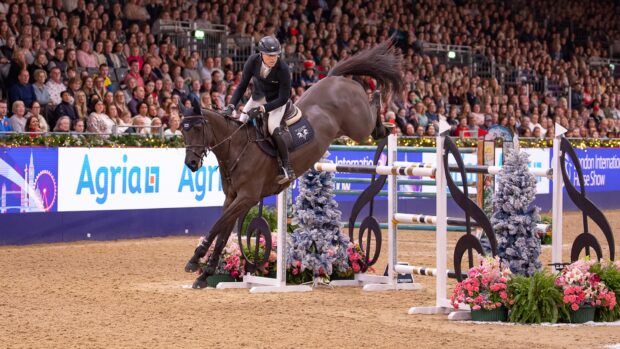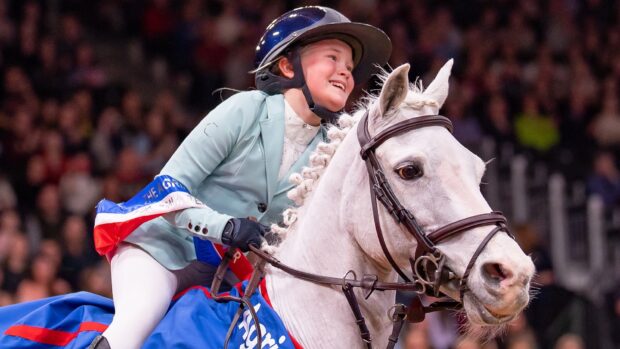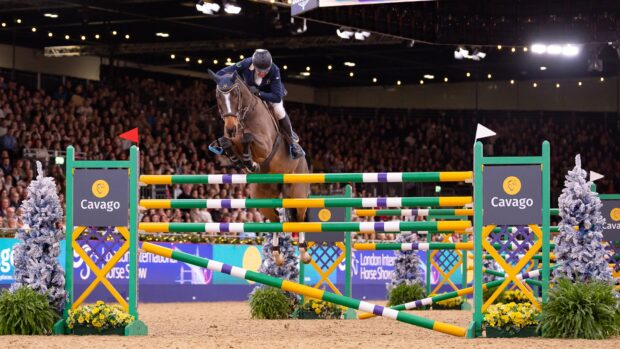The Grand National field size will be reduced to a maximum of 34 runners and the first fence moved closer to the start in 2024 as part of changes designed to improve safety.
The decisions follow an evidence-based review by Aintree racecourse operators The Jockey Club, supported by the British Horseracing Authority (BHA).
The headline change is the reduction in runners from 40 – which was set in 1984 – to 34 in next year’s race (13 April, 2024). The first fence will be moved 60 yards closer to the start, to prevent horses from building up too much speed, and a standing start is being reintroduced. A new race time is also in discussion.
Aintree’s clerk of the course Sulekha Varma, who is also The Jockey Club’s north west head of racing, led the review.
“The welfare of our racehorses and jockeys is our number one priority at Aintree and we have invested significantly in equine welfare over many years,” she said.
“We continually review the Grand National and following an in-depth, evidence-based review process this year, we are announcing several changes as part of its continued evolution.
“One of our key areas of focus is reducing the risk of incidents during the race. We know from research papers and internal analysis of jump races that there is a direct correlation between the number of runners and the risk of falling, unseating or being brought down.
“However, we also must consider that reducing the field size by too great a number could create a faster race and have an adverse impact in terms of safety. Using the information available to us and considering the experiences of participants, our conclusion is that 34 should be the maximum number of runners in the race which we hope will result in the least number of incidents.”
Grand National changes: what else is on the cards?
Changes for 2024 also include alterations to the inside running rail, to help with early capture of loose horses, pop-up irrigation for more effective watering, widening the walkways in the paddock, plus foam and rubber toe boards on every fence. The height of fence 11, an open ditch, will be reduced by two inches on the take-off side (from 5ft to 4ft 10in) on take-off side, with some levelling off on landing side to reduce the height of the drop.
The minimum rating for all horses will be raised from 125 to 130 and pre-race veterinary protocols will continue to be developed. A Grand National review panel will “closely scrutinise” horses entered that have made jumping errors in 50% or more of their last eight races before allowing them to run.
Horses will no longer be led by handlers on course during the pre-Grand National parade and will instead be released at the end of the horsewalk to then canter in front of the grandstands.
“We also considered the start time of the race, which was traditionally much earlier in the afternoon but changed to 5.15pm in 2016,” said Ms Varma. “While this has helped build excitement among the crowd throughout the afternoon, it has proved challenging in managing the ground. Returning to an earlier race time was recommended by both the BHA executive and Horse Welfare Board in their feedback.
“The benefits and relevance of the pre-race parade of horses in front of the grandstand was also brought into question. We hope that allowing jockeys to canter their horses in front of the stands at their own pace will help create a calmer environment during the build-up to the race.”
BHA chief executive Julie Harrington said that the Grand National “is the world’s greatest horse race” and that it has “maintained that status, in part, because of the developments and changes that have been made to it”.
“These changes have enabled it to move with the times and maintain public support while also ensuring that it remains a unique, thrilling spectacle and the ultimate test of a racehorse,” she said.
“The package of measures which will be introduced for next year’s race seeks to strike this crucial balance, and the BHA endorses them in full.”
Dual Randox Grand National-winning trainer Lucinda Russell said the changes are “a clear sign” that Aintree and The Jockey Club “continue to be proactive in trying to support the Grand National and the wider sport”.
“I am fully supportive of reducing the field size and I don’t feel that six fewer runners will make a difference to the heritage of the race – it can only be a good step and hopefully will help improve the start procedures,” she said.
“As regards moving the first fence, the further you go then the more speed you are going to pick up so logically it should mean they approach it slower. I know that it’s tricky for the jockeys to manage their speed as it’s such an important race and everyone is vying for a good position.
“Aintree do a wonderful job in always producing perfect ground conditions; it is ground on the soft side of good which is the way it should be.
“The level of welfare in racing is phenomenal and something we should be proud of. Once again Aintree is trying to make things safer.”
Retired jockey Ruby Walsh, who rode two Grand National winners, said the changes “represent the evolution of the Grand National”.
“The world is ever-changing and the Grand National and indeed horseracing, like any other sport, has to be prepared to change. Risk can never be removed but you have to try and minimise it,” said Ruby.
“Horse welfare is a huge part of horseracing – it’s a team sport between horse and rider and we are responsible for the welfare of the horse.”
He added: “You hope small things make for big progress. A lot of thought and effort has gone into this process – it was a proper and thorough review. It’s 10 years since the last changes were made and you can look and see what has worked and what needs to be evolved.
“There are lots of people who don’t like change but all sports change. Soccer is not the same game it was 30 or even 15 years ago and looking at the Rugby World Cup, rugby has had to evolve. Racing is the same in that we have to evolve to ensure the future of the sport.”
RSPCA director of policy Emma Slawinski described the changes as “a welcome step”.
“We believe that racehorses should have a good life on and off the track and should never be exposed to unacceptable risk of injury or death,” she said. “Any steps from The Jockey Club to meet that aim are a positive step forward, we look forward to seeing this announcement pave the way for further changes and remain keen to work with them.”
- What do you think? Send your thoughts to hhletters@futurenet.com, including your name, nearest town and country, for the chance for your letter to appear in the magazine.
You might also be interested in:

Subscribe to Horse & Hound magazine today – and enjoy unlimited website access all year round

Racing pledges to review Grand National meeting after three horses die

‘He is the cleverest horse’: Grand National provides fairytale result for British connections

Davy Russell: ‘Lucinda Russell proved she’s marvellous at Aintree’

Grand National tickets: everything you need to know to attend in 2025
Horse & Hound magazine, out every Thursday, is packed with all the latest news and reports, as well as interviews, specials, nostalgia, vet and training advice. Find how you can enjoy the magazine delivered to your door every week, plus options to upgrade your subscription to access our online service that brings you breaking news and reports as well as other benefits.



